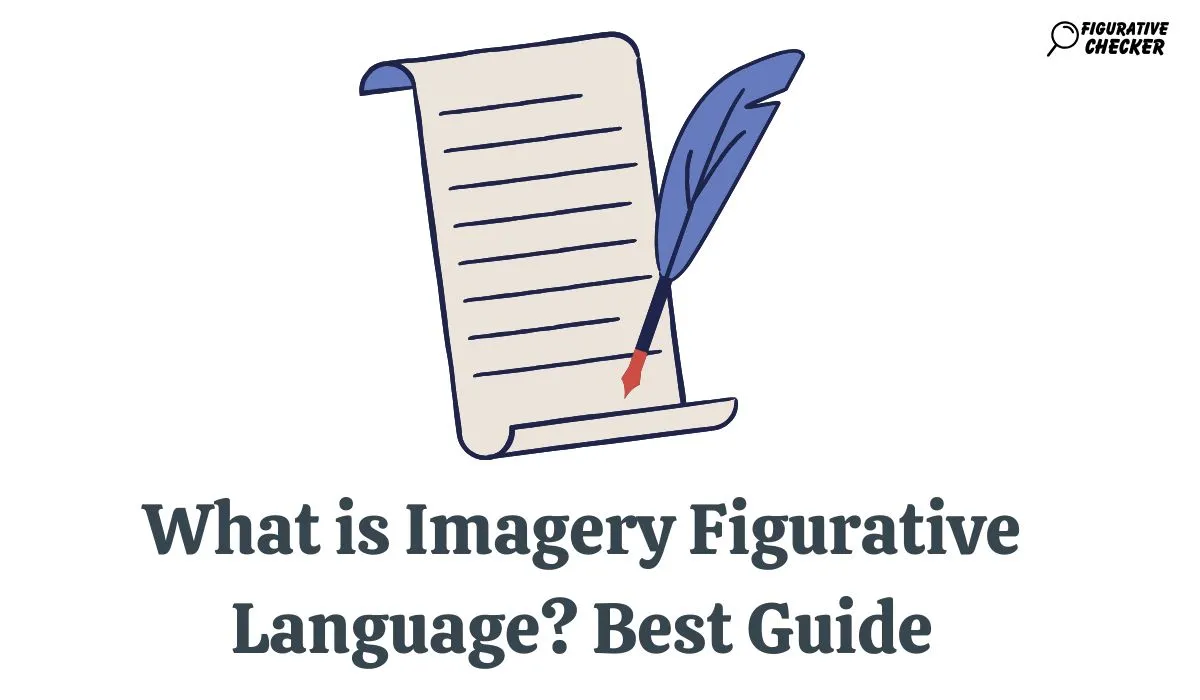Imagery and figurative language are essential elements in literature and creative writing. They enrich texts, evoke emotions, and help readers visualize complex ideas. In this comprehensive guide, we will delve into the meaning, types, and examples of imagery and figurative language, explore their literary significance, and provide exercises to help enhance your writing skills.
What is Imagery in Figurative Language?
Imagery is a literary device used to create vivid and detailed sensory experiences for the reader. It appeals to the five senses: sight, sound, touch, taste, and smell. By crafting vivid mental pictures, writers use imagery to make their work more engaging and memorable.
Definition of Imagery
Imagery refers to the descriptive language that authors use to convey sensory experiences and create mental images in the minds of readers.
5 Examples of Imagery in Literature
- Visual Imagery: Describes what we see.
- “The sky was a canvas painted with streaks of pink and orange as the sun dipped below the horizon.”
- Auditory Imagery: Describes sounds.
- “The rustling leaves whispered secrets to the wind.”
- Olfactory Imagery: Describes smells.
- “The aroma of freshly baked bread wafted through the kitchen.”
- Gustatory Imagery: Describes tastes.
- “The tangy sweetness of the orange burst on my tongue.”
- Tactile Imagery: Describes touch.
- “Her hands were as cold as the frost-covered windowpane.”
8 Types of Figurative Language
Figurative language uses non-literal expressions to convey meaning, evoke emotions, or emphasize specific ideas. Below are some common types:
1. Simile
A comparison using “like” or “as.”
- “Her smile was as bright as the sun.”
2. Metaphor
A direct comparison between two unlike things.
- “Time is a thief that steals our precious moments.”
3. Personification
Attributing human characteristics to non-human objects.
- “The wind danced through the trees.”
4. Hyperbole
Exaggeration for emphasis.
- “I’ve told you a million times to clean your room.”
5. Onomatopoeia
Words that imitate sounds.
- “The bees buzzed around the garden.”
6. Alliteration
Repetition of initial consonant sounds.
- “She sells seashells by the seashore.”
7. Symbolism
Using symbols to represent ideas.
- “The white dove symbolizes peace.”
8. Irony
A contrast between expectation and reality.
- “The fire station burned down.”
Importance of Imagery and Figurative Language in Literature
- Enhanced Reader Engagement: Vivid descriptions capture readers’ attention and immerse them in the story.
- Emotional Connection: Figurative language evokes emotions, helping readers connect with characters and themes.
- Deeper Meaning: Symbolism and metaphors add layers of meaning to a text.
- Memorability: Descriptive passages linger in the reader’s mind, making the work more impactful.
- Creative Expression: Authors can communicate complex ideas in a more imaginative and relatable way.
4 Imagery Examples in Literature
- William Shakespeare’s Romeo and Juliet
- “It seems she hangs upon the cheek of night, like a rich jewel in an Ethiope’s ear.”
- This visual imagery emphasizes Juliet’s beauty.
- F. Scott Fitzgerald’s The Great Gatsby
- “The lights grow brighter as the earth lurches away from the sun.”
- The imagery highlights the vibrant and chaotic atmosphere of Gatsby’s parties.
- Emily Dickinson’s Poetry
- “Hope is the thing with feathers that perches in the soul.”
- This metaphor creates a vivid image of hope as a bird.
- George Orwell’s 1984
- “The hallway smelt of boiled cabbage and old rag mats.”
- The olfactory imagery evokes the dreary setting of the dystopian world.
5 Exercises to Master Imagery and Figurative Language
1. Sensory Description Practice
Write a paragraph describing a scene using all five senses.
- Example: Describe a bustling farmer’s market.
2. Simile and Metaphor Challenge
Create five similes and five metaphors to describe everyday objects.
- Simile: “The moon was like a silver coin in the sky.”
- Metaphor: “Her laughter was music to his ears.”
3. Personification Writing Prompt
Write a short story where inanimate objects come to life.
- Example: “The old oak tree whispered secrets to the passing breeze.”
4. Imagery Analysis Exercise
Choose a passage from a favorite book and identify the types of imagery used.
5. Figurative Language Revision
Take a bland paragraph and revise it using figurative language to make it more engaging.
4 Common Mistakes and How to Avoid Them
- Overuse of Figurative Language: Too many metaphors or similes can confuse readers. Use them sparingly.
- Inconsistent Imagery: Ensure that imagery aligns with the tone and setting of the text.
- Clichés: Avoid overused phrases; strive for originality.
- Lack of Clarity: Ensure that figurative language enhances rather than obscures meaning.
FAQs
1. What is the difference between imagery and figurative language?
Imagery focuses on sensory descriptions, while figurative language includes a broader range of literary devices, such as metaphors and personification.
2. Can imagery exist without figurative language?
Yes, imagery can be purely descriptive without using figurative language. However, combining the two often creates a more powerful effect.
3. Why is imagery important in storytelling?
Imagery helps readers visualize scenes, connect emotionally with characters, and engage more deeply with the narrative.
4. How can I improve my use of figurative language?
Practice regularly, read widely to learn from skilled authors, and seek feedback from peers or writing groups.
Conclusion
Imagery and figurative language are vital tools for writers seeking to create vivid, engaging, and memorable works. By understanding their definitions, exploring examples, and practicing through targeted exercises, you can master these techniques and elevate your writing to new heights.
